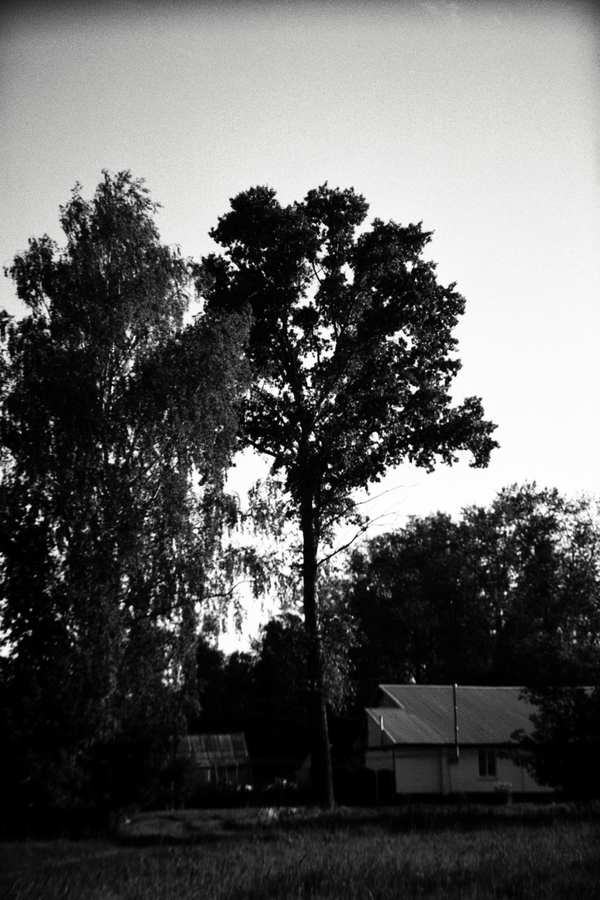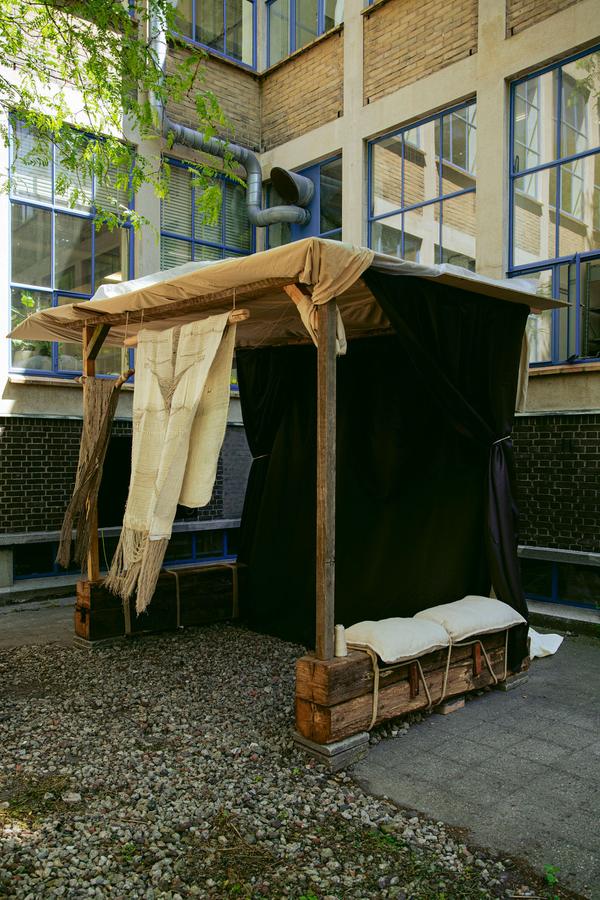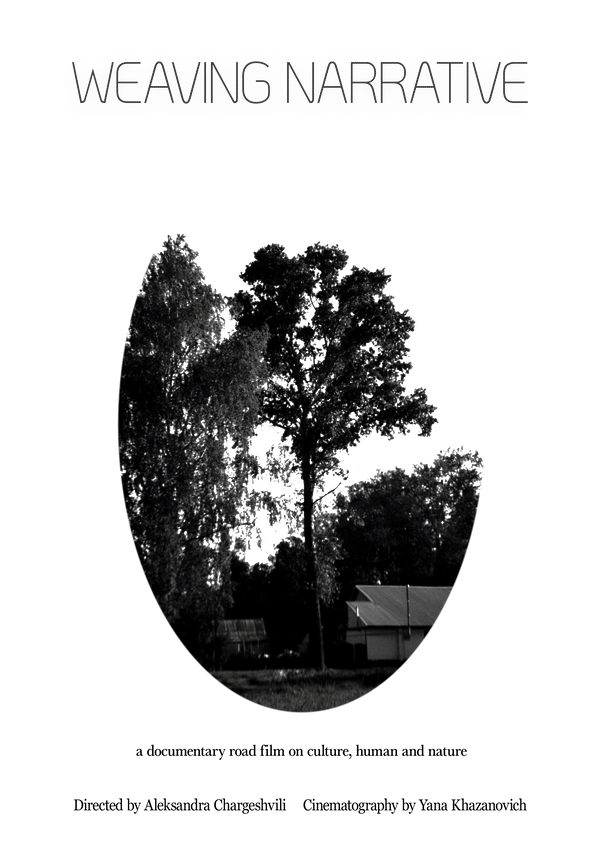Weaving Narratives of Hope:
In the Ruins of the Hemp Industry
–
Aleksandra Chargeshvili
In the Ruins of the Hemp Industry
–
Aleksandra Chargeshvili
Weaving Narratives of Hope explores the forgotten textile and industrial heritage of Cannabis sativa (hemp) and reflects on the relationships between craft, nature, and technology through the lens of the plant. The project consists of two parts. The first is a 23-minute documentary film shot in the summer of 2023 in rural central Russia, specifically in the Republic of Mordovia and the Penza region. The film includes archival footage and interviews with four people whose lives have been profoundly affected by their connection to hemp. The second part consists of a series of hemp tapestries, including both fully hand-woven pieces and those created with hand-manipulated techniques and digital technologies. These tapestries serve as artifacts of a potential future industry, encouraging reflection on the value of natural versus synthetic materials, human-hand versus technological creation, and the culturally specific versus the globalised.
![]()
As a painter with a desire to use sustainable materials, I discovered that Cannabis has long been associated with canvas making. My research revealed that this plant was successfully industrialised and then almost entirely forgotten over the last sixty years. The extent of the industry's loss and the traditions associated with this plant were hard to believe. This motivated me to conduct extensive research, through which I found regions where hemp factories were once integral to the regional economy, and that hemp was central to the textile practices of the Indigenous Mordvins. Using the concept of ‘natureculture’ developed by anthropologist Bas Verschuuren, I began to theorise my research by recognising nature and environmental conditions as inseparable from cultural genesis. According to Verschuuren, ‘intangible cultural heritage, transmitted from generation to generation, is constantly recreated by communities and groups in response to their environment, their interaction with nature and their history, and provides them with a sense of identity and continuity, thus promoting respect for cultural diversity and human creativity.’1 My focus is the industrial sector, and the need to develop an approach that respects both climate and cultural heritage while producing.
Craig Groves (ed.), Cultural and Spiritual Significance of Nature: Guidance
for Protected and Conserved Area Governance and Management, Gland, Switzerland: IUCN, 2021, p. 19, accessed through https://doi.org/10.2305/IUCN.CH.2021.PAG.32.en.
![]()
Weaving Narratives of Hope emphasies the urgent need to reintroduce natural materials into today's world by highlighting their ecological potential and their connection to culture through craftsmanship. Technologically, we have not been able to automate production that uses natural materials and craft techniques. Instead, we have replaced their immeasurable variety with synthetics and inferior automated processes. We have disrupted the constructive relationship between nature and humans that was central to our physical and psychological well-being. This shift has led to global environmental crises and severed the connection between humans, our cultural heritage, and nature. To counteract this loss, I am turning to traditional crafts such as hemp weaving. The reintroduction of artisanal techniques in combination with natural materials will be key to developing sustainable practices and protecting cultural diversity.
![]()
![]()
![]()
By focusing on the hemp industry and weaving practices, my work illustrates that sustainable development is possible when precious, slow, hand work is valued, and when the diversity of natural materials is respected and complemented by technology. This project is a call to action to recognise and name this connection and to adopt a more nuanced and ecological approach to production, one that respects both the planet and the rich fabric of human creativity and traditions.
![]()
![]()
![]()
Studying at the Master of Industrial Design department (MID) has profoundly shaped my approach to design through its emphasis on research-based practice and interdisciplinary exploration. Over the past two years, I have learnt the importance of taking a position and engaging in self-reflection. I have learnt to name things and to be concrete rather than abstract and vague. I have developed a particular focus that I will pursue in my practice: exploring narratives that show the connections between humans and nature, and how we have been shaped by these relationships. In practice, I will ensure that my creations are fully biodegradable and leave traces similar to the archaeological remains of our ancestors.
![]()

As a painter with a desire to use sustainable materials, I discovered that Cannabis has long been associated with canvas making. My research revealed that this plant was successfully industrialised and then almost entirely forgotten over the last sixty years. The extent of the industry's loss and the traditions associated with this plant were hard to believe. This motivated me to conduct extensive research, through which I found regions where hemp factories were once integral to the regional economy, and that hemp was central to the textile practices of the Indigenous Mordvins. Using the concept of ‘natureculture’ developed by anthropologist Bas Verschuuren, I began to theorise my research by recognising nature and environmental conditions as inseparable from cultural genesis. According to Verschuuren, ‘intangible cultural heritage, transmitted from generation to generation, is constantly recreated by communities and groups in response to their environment, their interaction with nature and their history, and provides them with a sense of identity and continuity, thus promoting respect for cultural diversity and human creativity.’1 My focus is the industrial sector, and the need to develop an approach that respects both climate and cultural heritage while producing.
Craig Groves (ed.), Cultural and Spiritual Significance of Nature: Guidance
for Protected and Conserved Area Governance and Management, Gland, Switzerland: IUCN, 2021, p. 19, accessed through https://doi.org/10.2305/IUCN.CH.2021.PAG.32.en.

Weaving Narratives of Hope emphasies the urgent need to reintroduce natural materials into today's world by highlighting their ecological potential and their connection to culture through craftsmanship. Technologically, we have not been able to automate production that uses natural materials and craft techniques. Instead, we have replaced their immeasurable variety with synthetics and inferior automated processes. We have disrupted the constructive relationship between nature and humans that was central to our physical and psychological well-being. This shift has led to global environmental crises and severed the connection between humans, our cultural heritage, and nature. To counteract this loss, I am turning to traditional crafts such as hemp weaving. The reintroduction of artisanal techniques in combination with natural materials will be key to developing sustainable practices and protecting cultural diversity.



By focusing on the hemp industry and weaving practices, my work illustrates that sustainable development is possible when precious, slow, hand work is valued, and when the diversity of natural materials is respected and complemented by technology. This project is a call to action to recognise and name this connection and to adopt a more nuanced and ecological approach to production, one that respects both the planet and the rich fabric of human creativity and traditions.



Studying at the Master of Industrial Design department (MID) has profoundly shaped my approach to design through its emphasis on research-based practice and interdisciplinary exploration. Over the past two years, I have learnt the importance of taking a position and engaging in self-reflection. I have learnt to name things and to be concrete rather than abstract and vague. I have developed a particular focus that I will pursue in my practice: exploring narratives that show the connections between humans and nature, and how we have been shaped by these relationships. In practice, I will ensure that my creations are fully biodegradable and leave traces similar to the archaeological remains of our ancestors.
